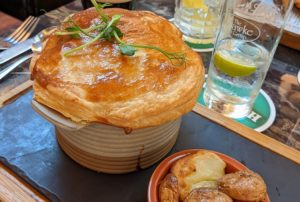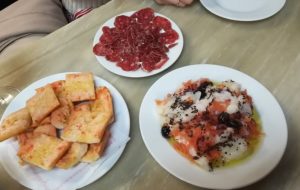Some of my fondest memories from childhood were made trick-or-treating on the streets of my neighborhood on the eve of Halloween. I recall the traditions in vivid detail.
My choice of character was always Count Dracula. It was an elaborate dress up – the white makeup for complexion, the black tuxedo and cape, the buttoned white-collar shirt, the bowtie and waistcoat, the black hair-dye and oil to slick it back, the black marker drawn widow’s peak hairline and finally, the fangs.
It’s nostalgic to think back to those nights, crossing paths with all your neighborhood friends and families in the streets – guessing their characters and evaluating their presentations. Acquiring and hoarding vast quantities of candy. I think its futile to try and name all the distinct elements of a quality Halloween night, it’s a full package. It’s also a disservice to the intangibles, such as the seasonally distinct smell of the air.
It is these contingencies that make for the sobering reality that you can never quite relive in full, the experiences one had as a child. It’s frustrating – attempting to replicate every particular detail only to be left feeling short of something. One learns, however, to accept that they were a product of a particular time, place, and space and, a particular you – a child, whose reality was relatively simpler and more innocent. This isn’t necessarily a bad thing.
In fact, partaking in the same occasion as an adult, as I did this last weekend in Dublin, I was treated to a richer experience of Halloween. It is by sheer coincidence that I happened to be in the very country in which the origins of Halloween lie. In particular, the Celtic festival of Samhain is identified as the cultural foundation of the traditions of Halloween. In honor of this legacy, the Irish appear to have a great reverence for the tradition – the scale of preparation and commitment to the occasion took me by surprise, though perhaps it ought to be expected of them, as a culture that protects its heritage through partaking in it.
Though, had the pagans of 2000 years ago observed the festivities of this weekend, much would appear unfamiliar to them. The tradition, though conserving relics of its pagan heritage, has understandably evolved through time – adopting by social pressure, if not just chance, new practices, and signifiers. This isn’t strange – culture is deeply provisional. Even the Pagan traditions thousands of years ago were themselves the unstable mixtures of multiple pre-existing cultural customs. Thus, while my Halloween experience this weekend was different in many ways to the ones I grew up with, this is not lamentable – it was an occasion for a newer, richer appreciation for the nature of change balanced by honoring the effort of those before us who conserved the cultural traits of the beginning by passing along those traits ourselves.





